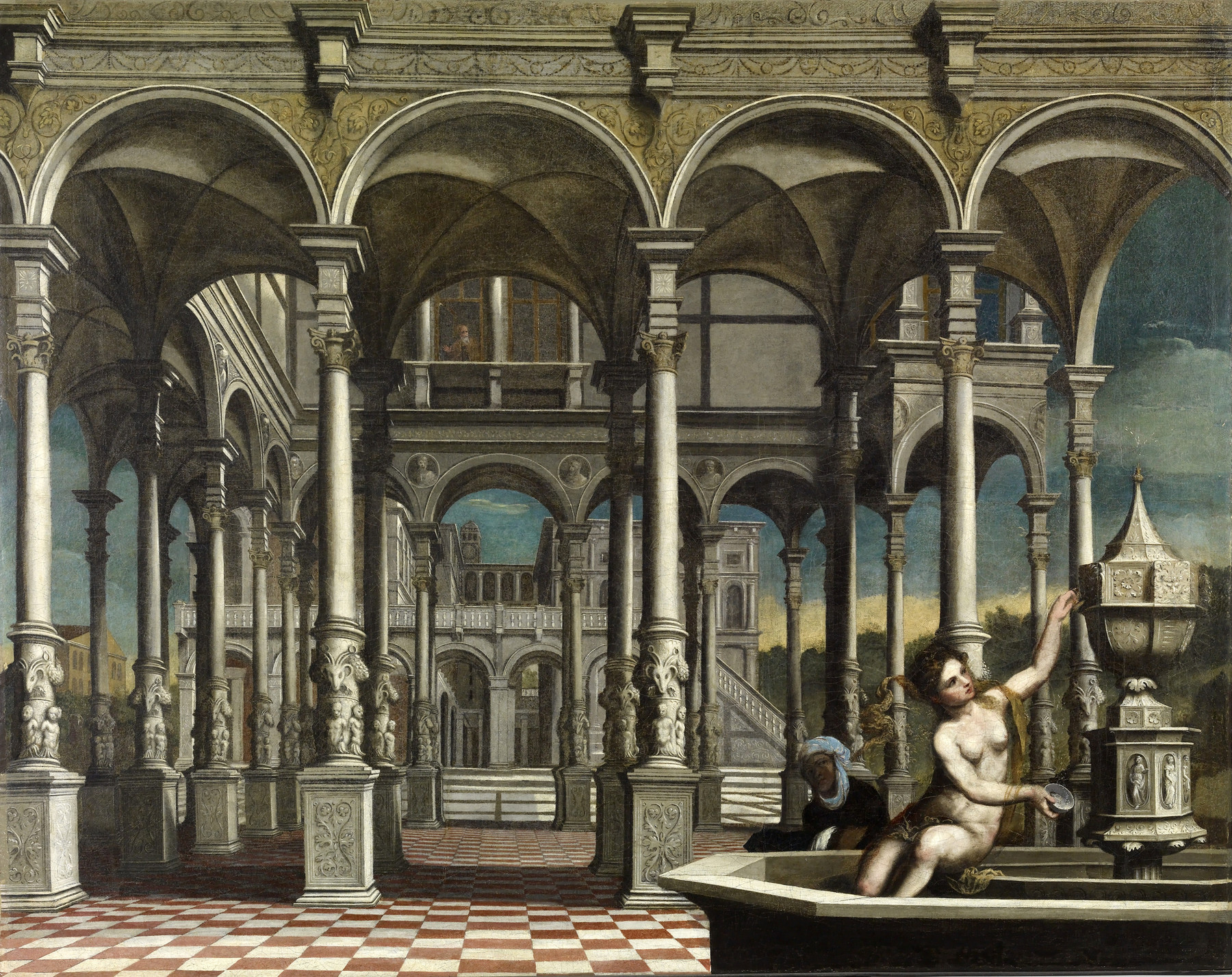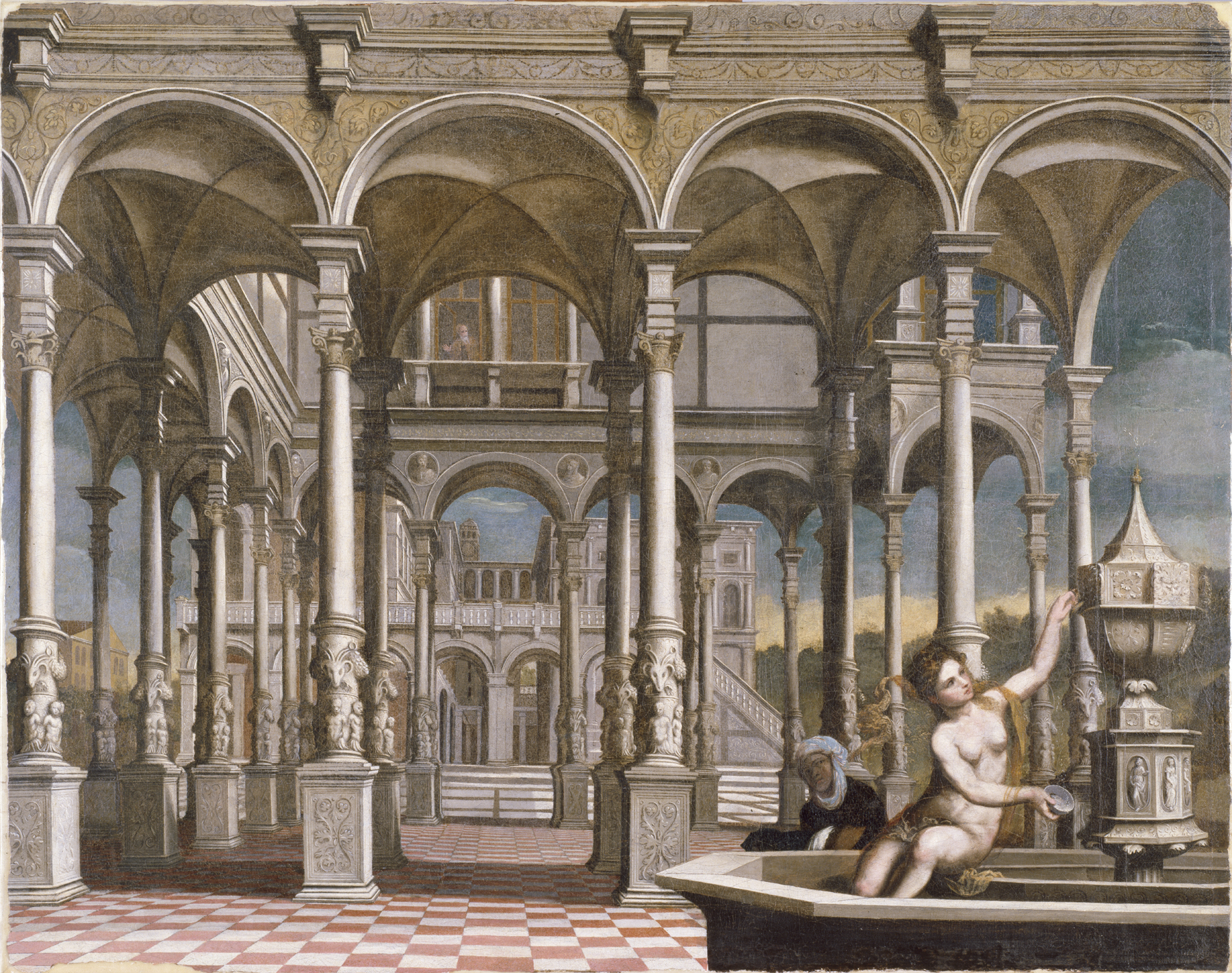David and Bathsheba
(Renaissance Europe )
This scene depicts the story of Bathsheba as described in the Old Testament book of 2 Samuel (11:2). Bathsheba was the wife of one of King David’s military commanders, and here, King David surreptitiously violates her privacy by gazing at her from his palace while she bathes. King David’s infatuation with Bathsheba will lead him to order her husband’s death and take her as his wife. In the biblical account, God punishes David by causing his and Bathsheba’s newborn son to die.
The only witness to the King’s aggression, Bathsheba’s servant—here shown as a Black woman although her race is not mentioned in the biblical passage—provides the focal point of tension in the visual narrative depicted here. The artist may have depicted the servant as Black both to draw attention to her pivotal role as witness and to reflect contemporary experience in Venice.
Venetian painters, such as Bordone, were particularly known for their ability to paint beautiful women. The painting is characteristic of Bordone’s fondness for fantastic architectural settings and deep perspective.
For more information on this painting, please see Federico Zeri's 1976 catalogue no. 271, p. 398.
Provenance
Provenance (from the French provenir, 'to come from/forth') is the chronology of the ownership, custody, or location of a historical object.
Owned by Mrs. Donald B. Hebb, Baltimore; given to Walters Art Museum, 1956.
Exhibitions
| 2017 | Die Poesie der venezianischen Malerei - Paris Bordone, Palma il Vecchio, Lorenzo Lotto, Tizian (The Poetry of Venetian Painting: Paris Bordone, Palma il Vecchio, Lorenzo Lotto, Titian) . Hamburger Kunsthalle, Hamburg. |
Geographies
Italy, Venice (Place of Origin)
Measurements
Painted surface H: 44 7/8 × W: 57 1/16 × D: 1 1/16 in. (114 × 145 × 2.7 cm); Framed H: 58 7/8 × W: 71 1/2 × D: 4 5/16 in. (149.54 × 181.61 × 11 cm)
Credit Line
Gift of Mrs. Donald B. Hebb, 1956
Location in Museum
Accession Number
In libraries, galleries, museums, and archives, an accession number is a unique identifier assigned to each object in the collection.
In libraries, galleries, museums, and archives, an accession number is a unique identifier assigned to each object in the collection.
37.2371




